Story
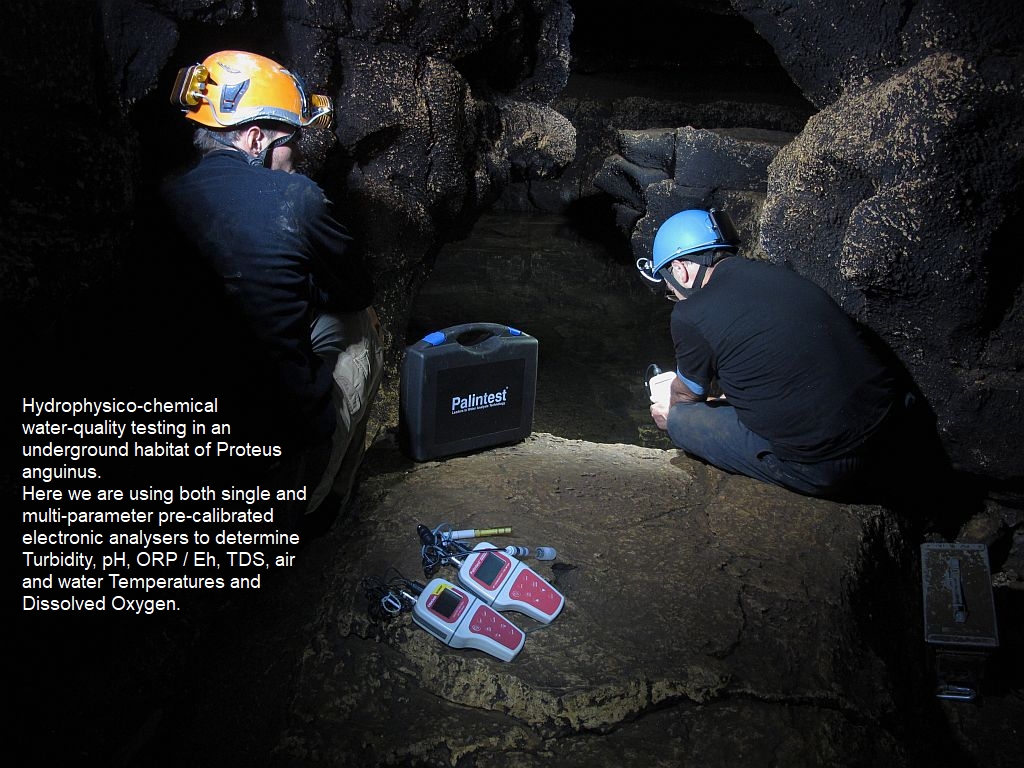
About the Critically endangered European Cave Salamander Proteus anguinus anguinus (Laurenti, 1768) .....
This unique relict species of the geological past is critically endangered because of a range of human activities. It lives in the karst underground where the cave aquatic habitats in which it lives are also being similarly threatened. This amazing stygobitic animal is an amphibian and represents the largest cave vertebrate in Europe.
In similarity with the range of other associated exotic and strange fauna, it can live only in chemically clean water, not only free of contaminants produced by human activities but also free of a specific range of natural mineral constituents.
The most damaging chemical constituents range from elevated levels of dissolved inorganic substances such as Nitrates (toxic above 2mg/litre), Nitrites (very toxic above trace levels) and free Ammonia or dissolved Ammonia in the form of the Ammonium ion (extremely toxic), to various organic pollutants, many of which are endocrine disruptors. The inorganic substances just mentioned are usually found in trace amounts but these are attenuated where leachates from landfill sites enter the ecosystems. The outputs from unregulated or poorly maintained waste-water treatment plants, the overuse of agrochemicals, unlawful domestic and industrial discharges into open waterways or karst sinkholes all contribute to the degradation of underground karst aquatic systems.
The objective of this fund-raising scheme is to allow us to acquire the technology to more effectively monitor the water chemistry of the natural habitats which Proteus inhabits. We are currently doing so for many other water-quality parameters but acquisition of the HACH DR900 Colorimeter + associated reagents will allow us to conveniently monitor a whole range of additional parameters with one instrument. We are currently in the 20th year of doing so, in what is a 30-year project. Because the "Proteus Project" is 100% voluntary and we have no sources of capital funding, we hope we can raise the money required to purchase this instrument as quickly as possible in order to acquire the additional data necessary to characterise the ecological problems associated with the existentially threatened Proteus.
THE IMAGE BELOW portrays the versatile HACH DR900 Colorimeter which we wish to buy at £2,447 (incl. 20% VAT) without its associated chemical reagents. The acquisition of this valuable piece of scientific equipment is the subject of and reason for this Crowdfunding Appeal. The range of consumable reagents will cost about another £2,000 to keep us going for the next 3 years. This multiparameter analyser offers us the ability to determine many parameters which are not able to be done with any of the HACH single parameter analysers (such as the DR300 unit, which we had previously mistakenly pictured here).
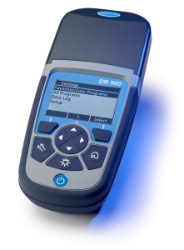
WHY PORTABLE ANALYTICAL EQUIPMENT? To enable us to acquire dynamic analytical data, we need to analyse at the sampling location, whether that is at a cave spring mouth or deep underground. The chemistry of karst water is based on an inherently unstable carbonate / hydrogen carbonate mix of anions, which even varies according to where it is sampled or analysed within a cave system. The mixing of dripping percolation water together with streamlets flowing into underground rivers presents a constantly changing hydrophysico-chemical profile. Sampling sites are selected and then fixed in the sampling regime and are then used thereafter, whatever the prevailing hydrological conditions. So to reach many of these locations, we need to use not only fully portable compact analysers but also very accurate devices, which, if necessary, can be calibrated where they are used. THE NEXT IMAGE BELOW illustrates a typical situation where the water sampling location is at the bottom of a vertical entrance shaft of an estavelle. Here, the equipment is contained in a "rope bag" which is lowered down into the shaft, slightly ahead of the analyst who has to guide it exactly to the point where it is to be used - in this case it is a siphon pool. In this instance, the analyst remains attached to a parallel SRT rope and must conduct the water analysis hovering in position above the siphon pool without entering the water body itself so as not to disturb or contaminate it. Not all locations are as convenient to work in, such as that portrayed in the image near the top of this page, which pictures the analyst sitting down to use portable equipment at about 600m (1,970 feet) inside a cave passage.
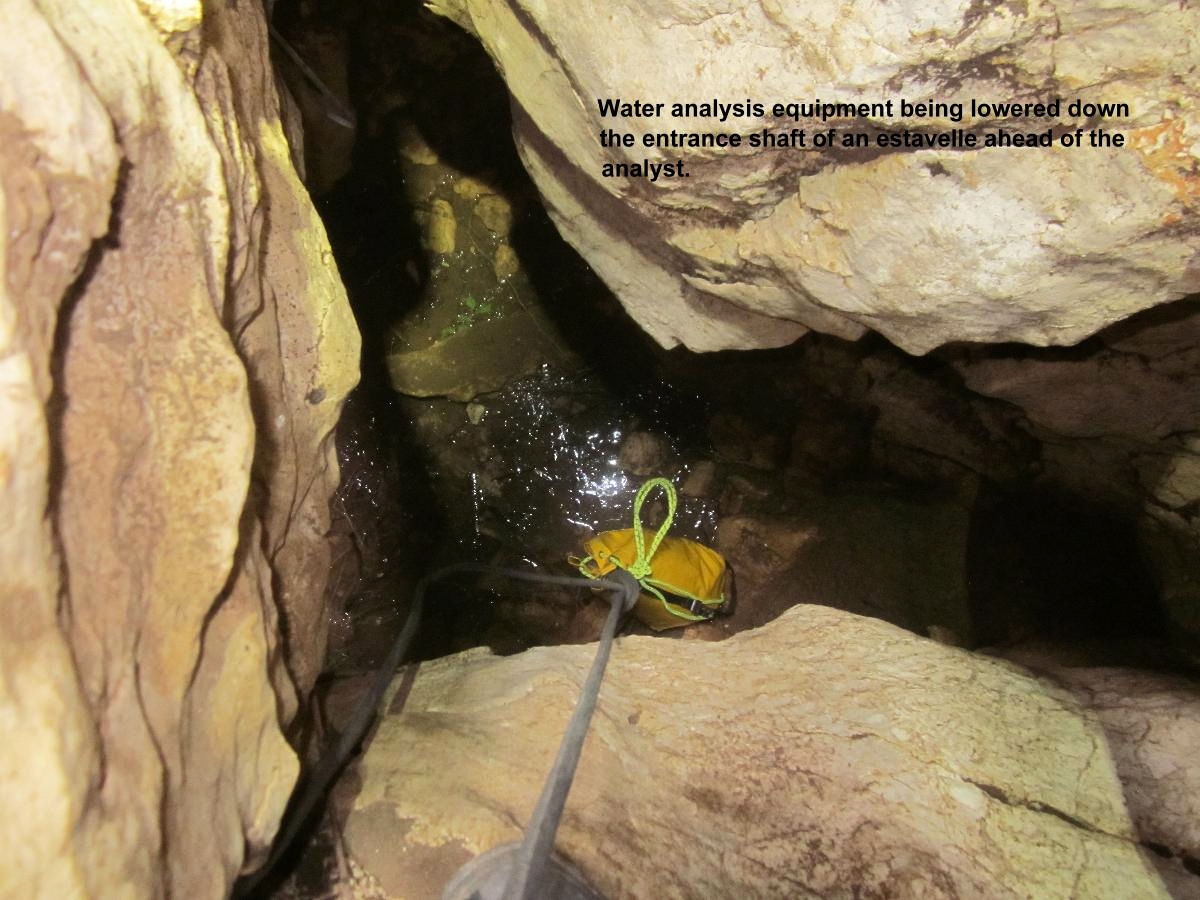
BELOW: THE PROTEUS OBSERVATORIUM AND RESCUE & VETERINARY CARE FACILITY. The "Proteus Project" has set up the "Trebinje Proteus Observatorium and Proteus Rescue & Care Facility". Using underwater infrared cameras and lights, this is the first such location anywhere and allows us to observe and record the behaviours of this unique obligate stygobitic amphibian, without the use of white light and without human presence and, importantly, in its NATURAL cave habitat. As the name of the Facility indicates, we also re-home stray Proteus individuals that are washed-out or forced out of their natural habitats during flood conditons. When we cannot return the rescued individuals to their original cave ecosystem, they are firstly quarantined in a glass aquarium within the safe and secure environment of the Observatorium for about 3 days, in order to go undergo treatment to prevent the fungal virus condition of Saprolegniasis from being accidentally transferred into the wild environment of the Observatorium. We can also cure the very early stages of this infection. After 3 days, the Proteus individual is then released into the natural wild cave environment of the Observatorium, where it (or they) can join an existing natural breeding colony.
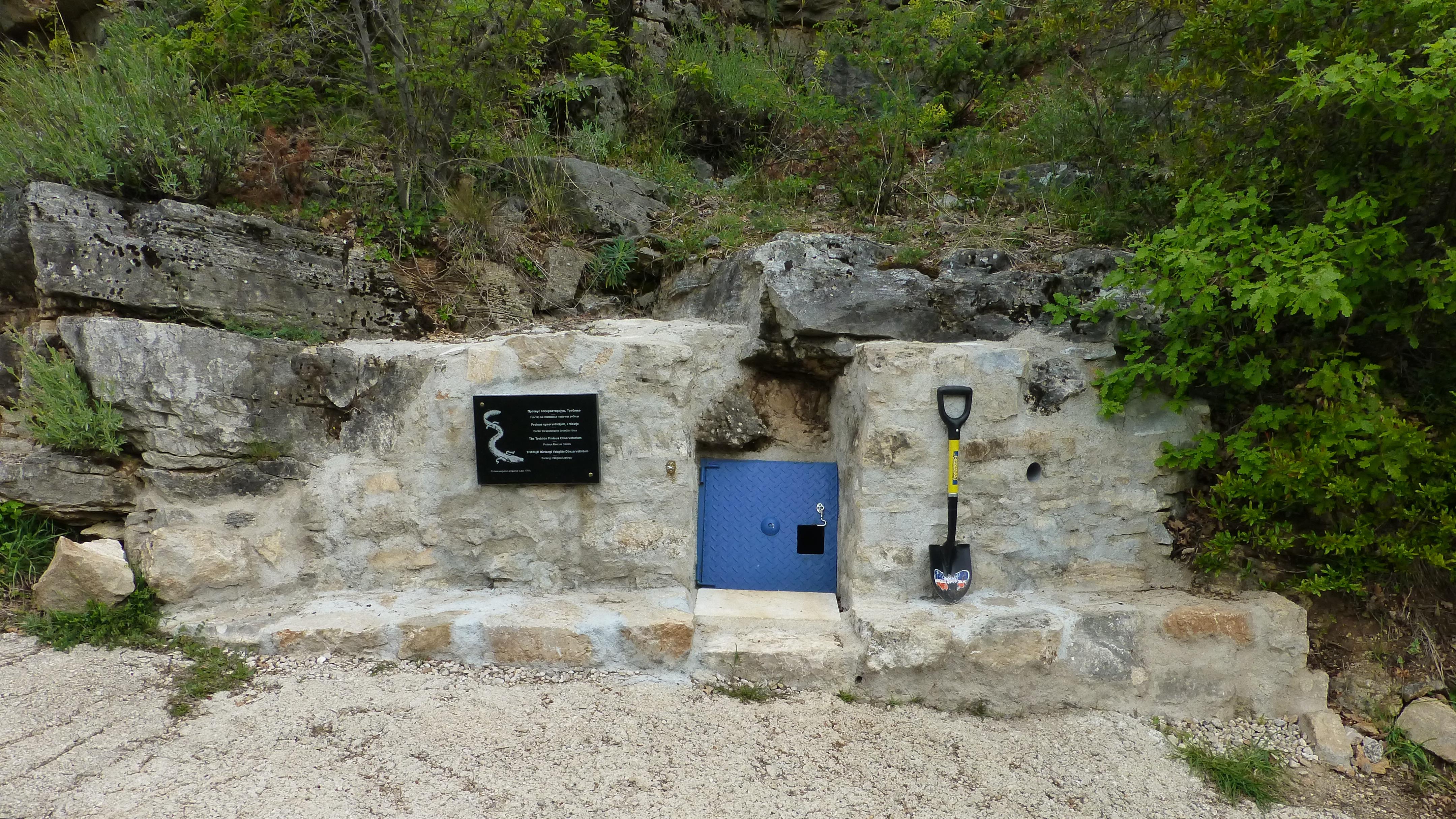
THE VIEW ABOVE illustrates the low-impact external entrance to the Upper Dry Series of the Trebinje Proteus Observatorium and Rescue & Care Facility. This was created within an existing cave entrance. Built of local Cretaceous Limestone and reinforced with steel bars, this forms a secure, gated Proteus Habitat Location. Inside, the infrastructure is confined to the immediate entrance area. The water quality of this natural Proteus habitat location is regularly tested. THE VIEW BELOW shows the cave interior just inside this entrance, illustrating a short access ladder leading directly to the Quarantine & Veterinary Treatment Aquarium, which was mentioned above. Beyond the immediate area illustrated below, the cave is in its natural wild state, apart from underwater infrared cameras, lights and associated cables, which take carry 12V electrical power to the cameras and lights and take the camera signals back to the surface. The video signals can then be channelled directly to laptop / PC / TV screens or projected onto a large screen for public education purposes. This Facility offers us the opportunity of viewing various groups of Proteus as they move about their "preferrered residence sites".
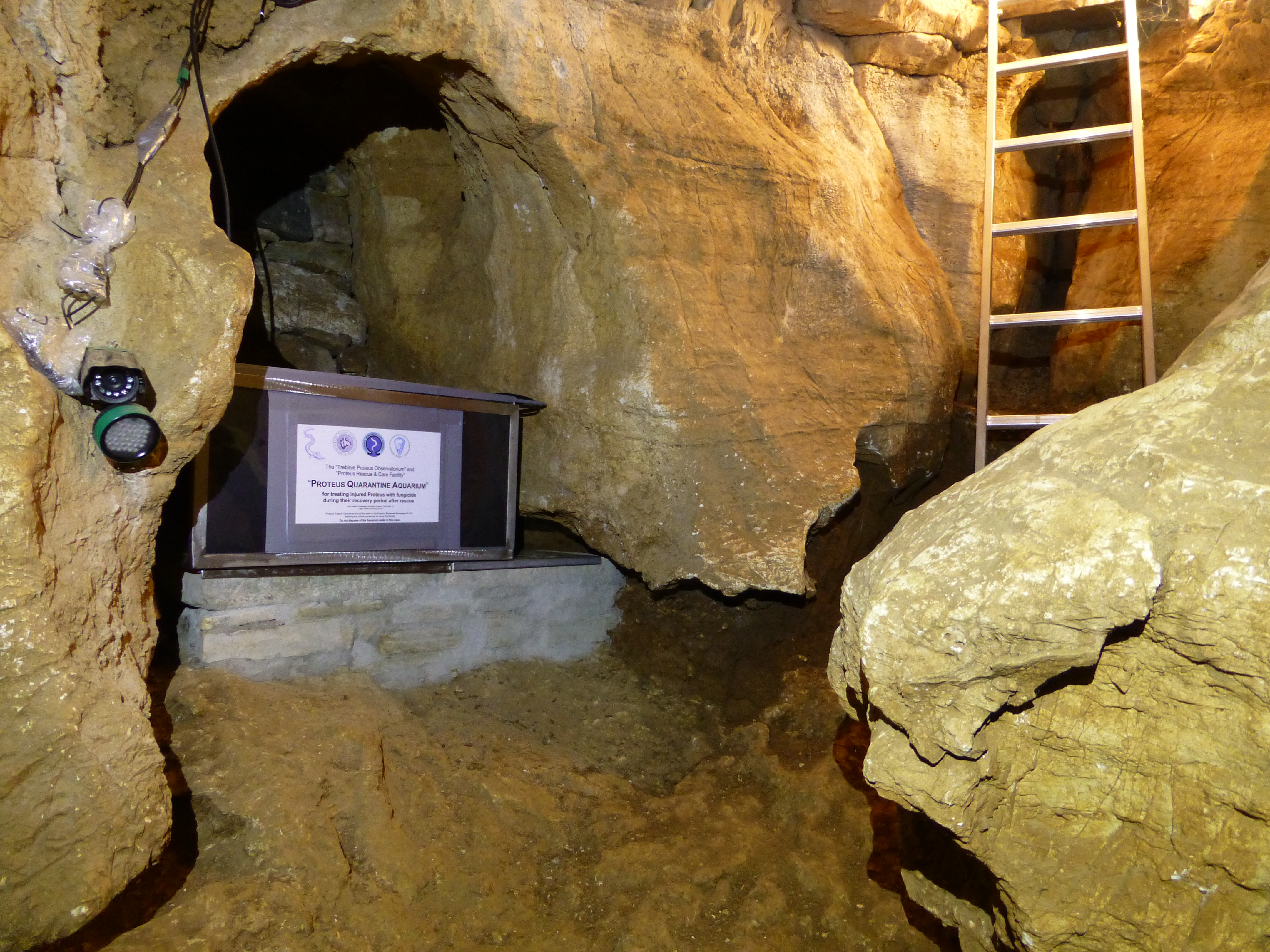
Infrared photos and videofilm appear only as monochrome (black to grey and white) images. This apparent restriction is not so much a problem with moving images. The two images below indicate an identical underwater cave scenario, seen firstly as a monochrome version and secondly as a full colour version. The scenario illustrates an underwater neo-vertical cave wall full of crevices in the brown stalagmitic deposits and into which Proteus can crawl and hide or take refuge during high water flow / flood conditions. This is a principal survival strategy. QUESTION - Can you detect how many of our wild Proteus anguinus cave salamanders can be seen in this view? The answer will be given in each of our "thankyou responses" to all donors after 09 December. By comparing these 2 images, you will surely understand the visual-quality issue with still-photographic images recorded in Infrared.
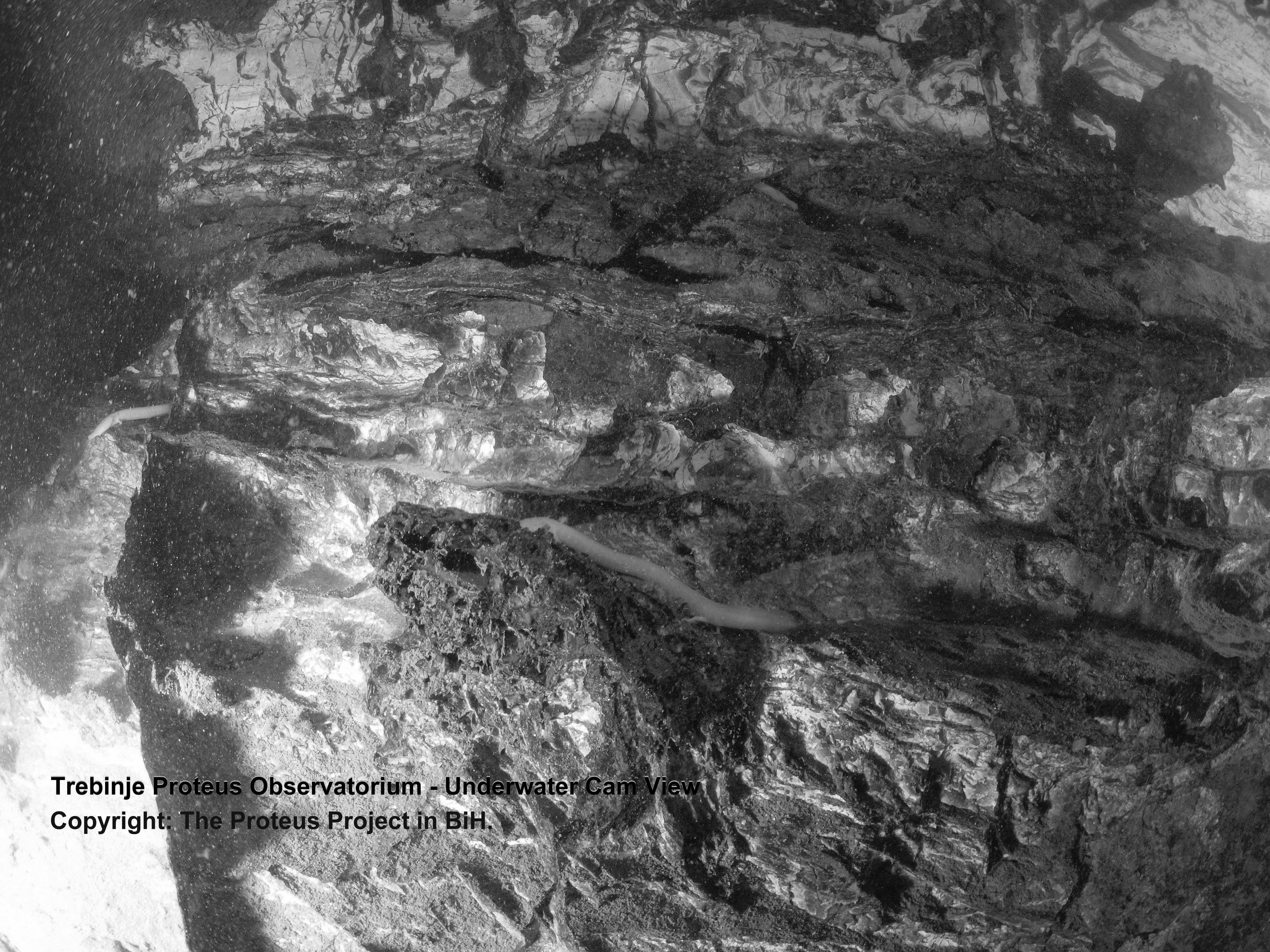

THE GLOBAL SPECIES EXTINCTION CRISIS UP FRONT - THE REALITY OF BIODIVERSITY LOSS: 31 species of plants and animals have gone extinct in the latest tally. The extinction list by the IUCN (International Union for the Conservation for Nature) assesses the survival prospects of plants, animals and fungi. 31 species of plants and animals have become extinct in the latest 4-month tally. They include FROGS, FISH several PLANTS and a species of BAT. In the third and final update for this year, Dr Bruno Oberle, director general of the IUCN, said the recovery of the European bison and 25 other species demonstrated "the power of conservation". But the growing list of extinct species "is a stark reminder that conservation efforts must urgently expand", he added. The "Proteus Project" is at the "coal face" of species conservation and cave species desperately need help if they are to survive.
PUBLICATIONS : We selectively publish some of our work in both peer-reviewed international journals and in the "Proteus Project's" own in-house publications, one of which is titled "Observations in Speleology", ISSN 2490-3493. Please see the images below which illustrate a selection of Front Covers of "Observations in Speleology", where a few of the diverse range of topics and research are presented.
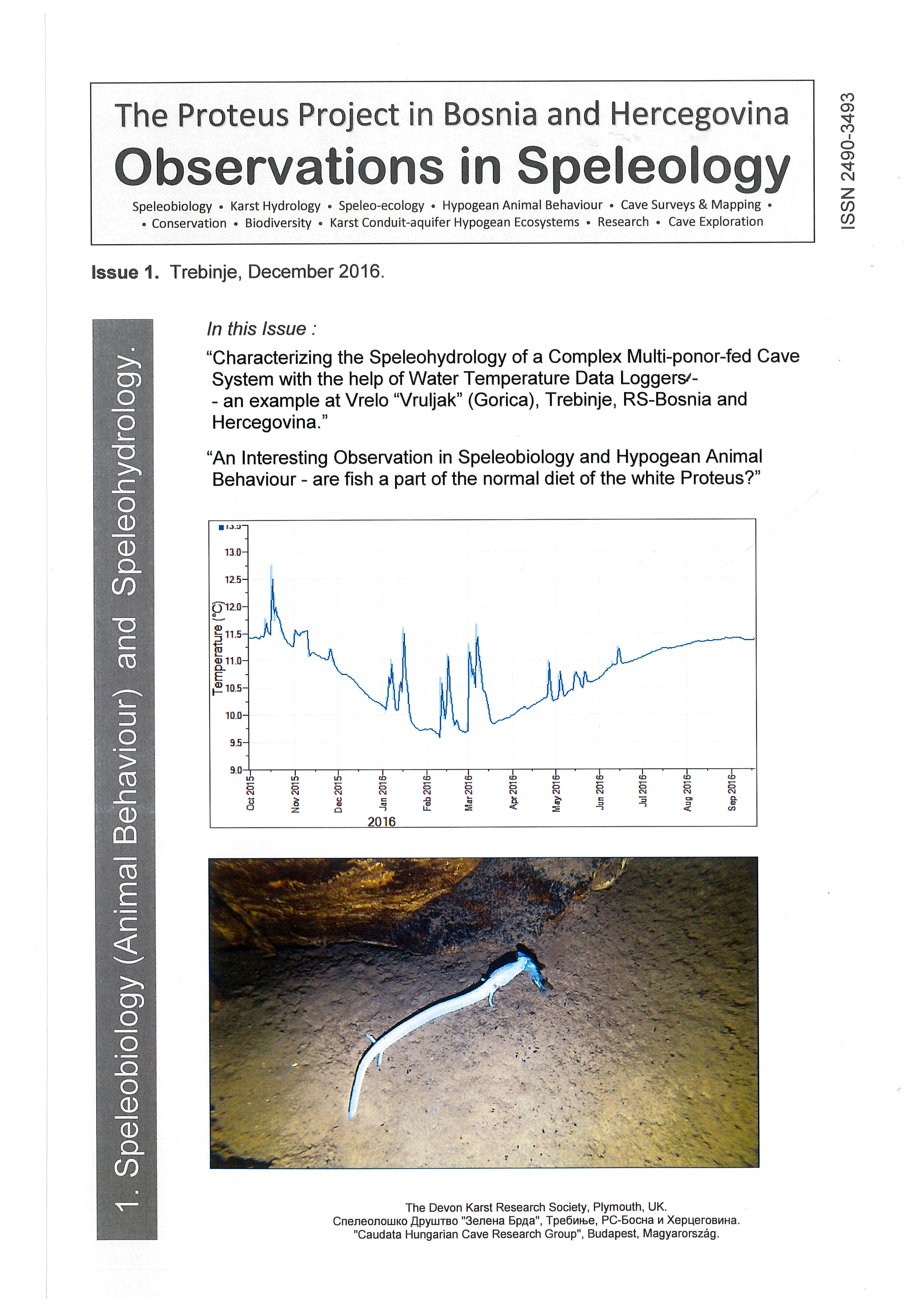
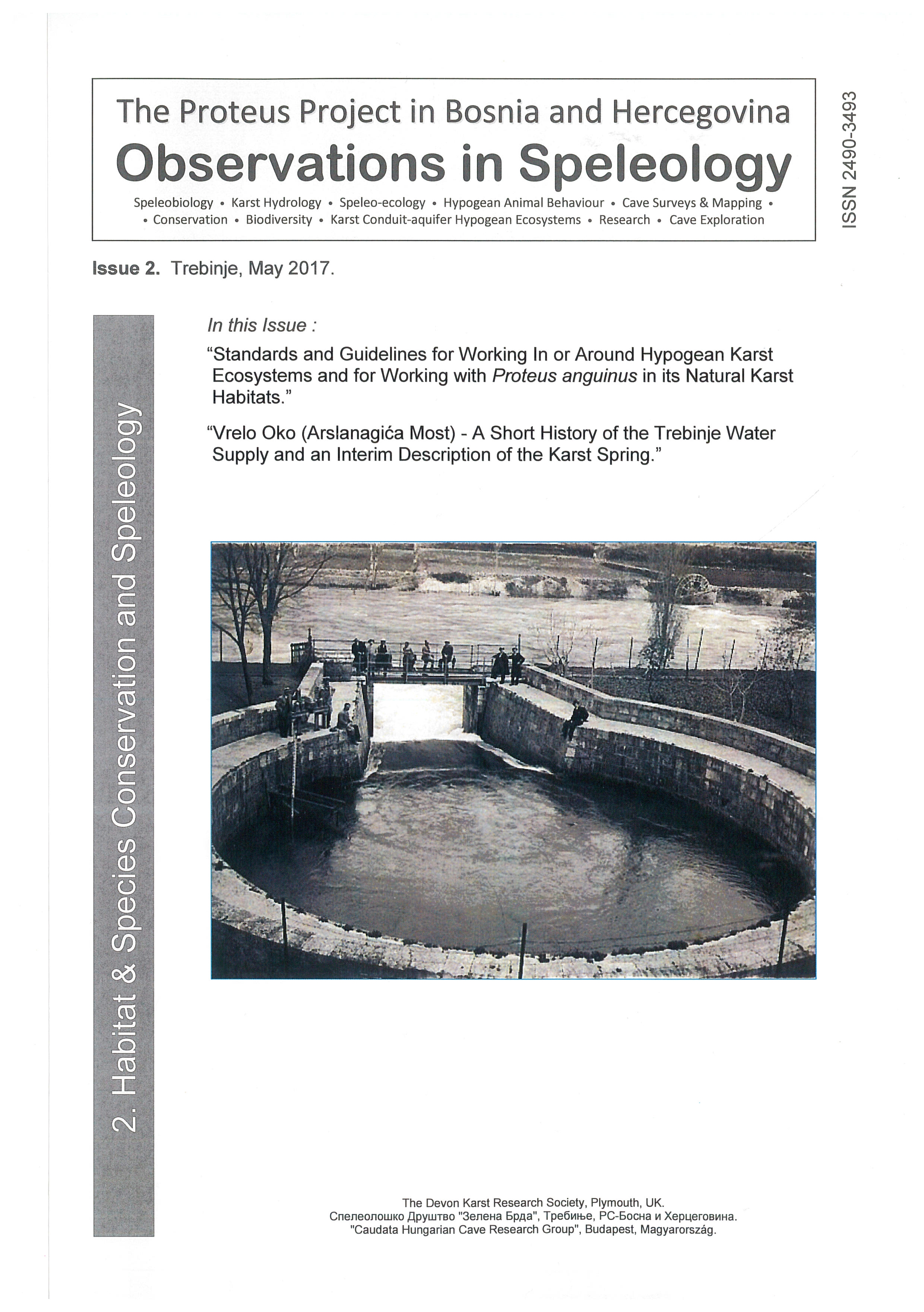
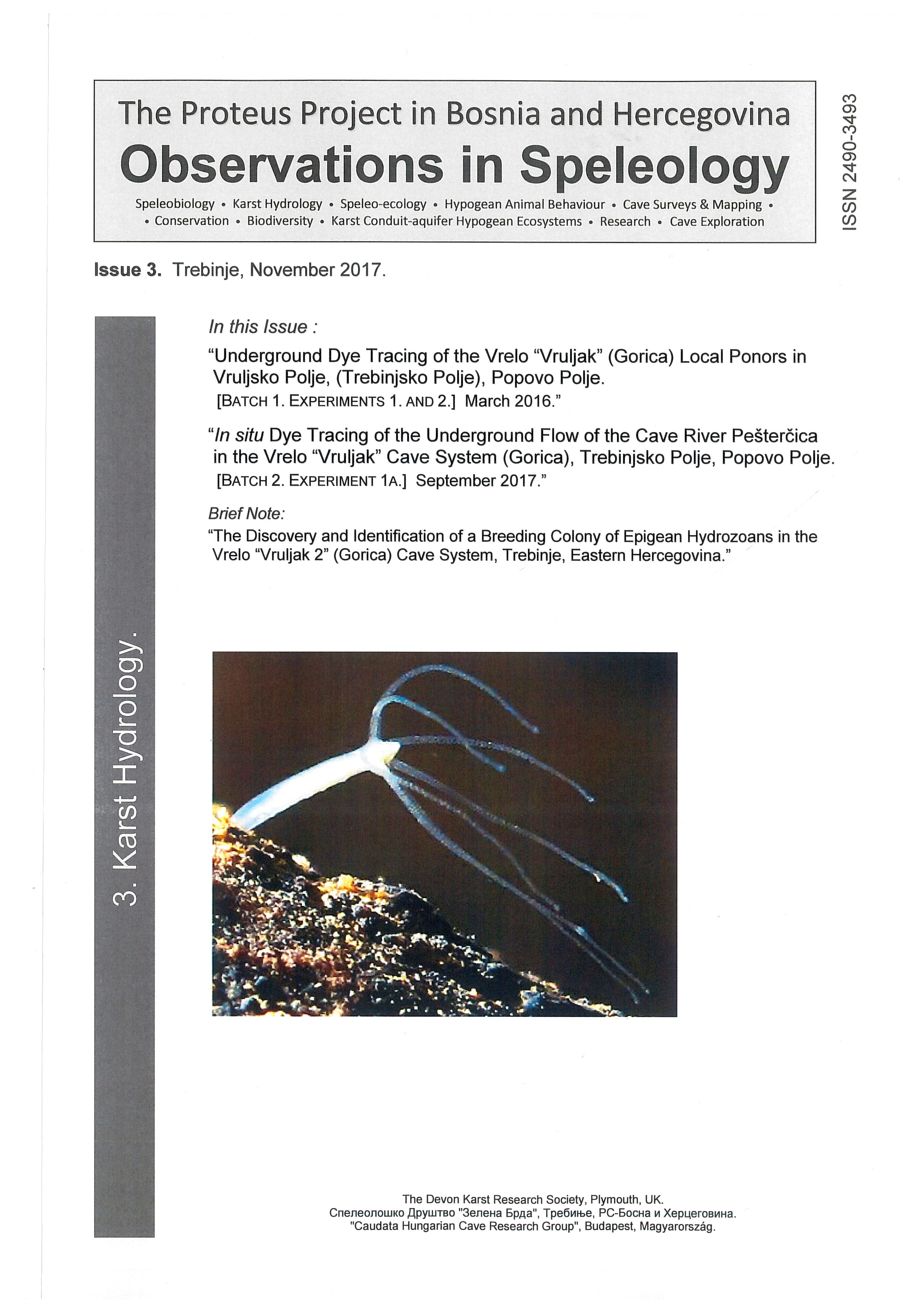
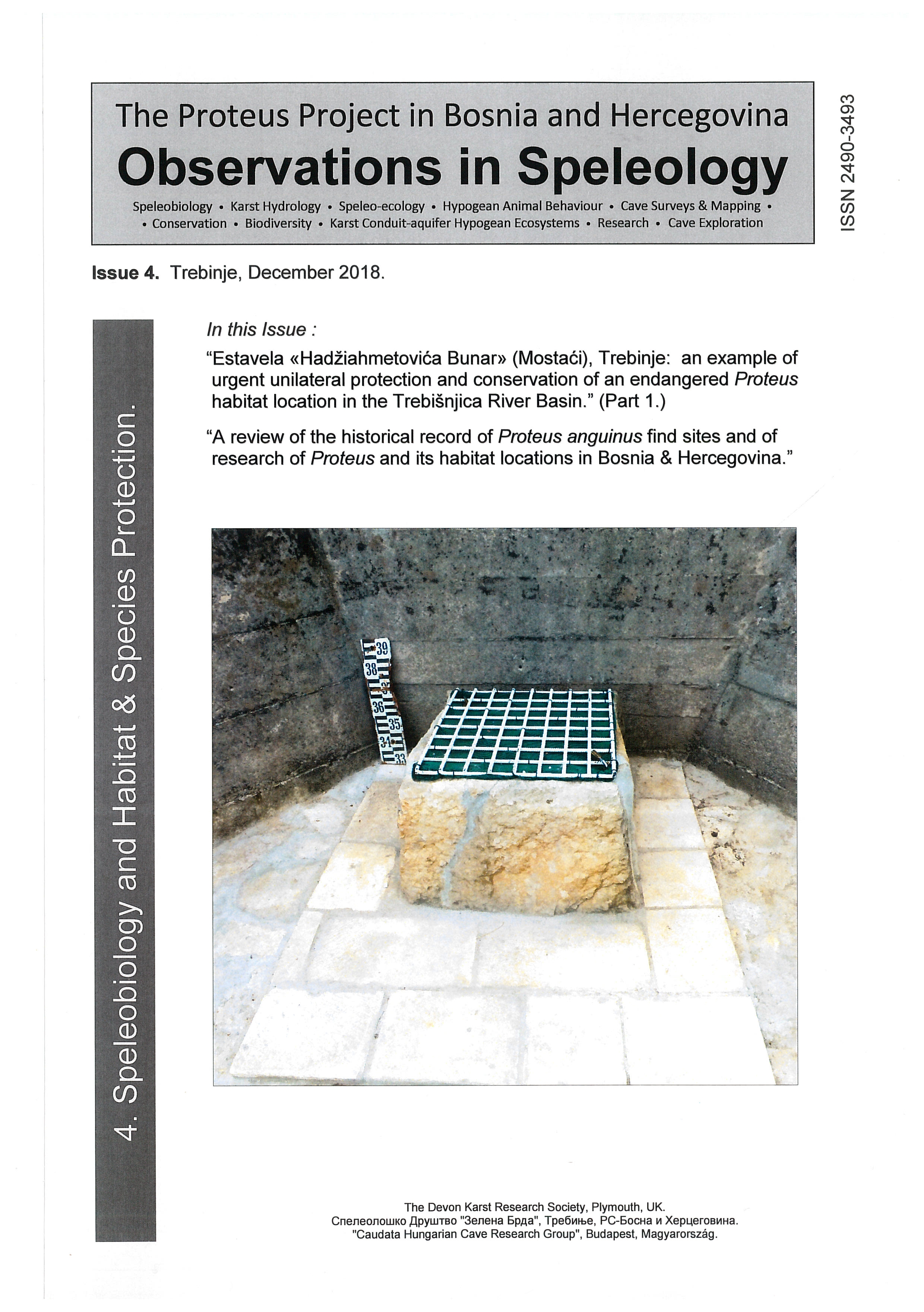
Owing to problems caused by specimen collectors and rogue "scientists", collecting continues to be a daunting issue to deal with, which is why we rarely give away location names or any other data which would further endanger this species, except for the few locations that are already well known about and others which we have physically protected. Specialists in the Government's Nature Protection Institute in RS-Bosnia & Hercegovina are in total agreement with us on this and other species-protection and conservation-management issues, including the identification of both pollution sources and polluters.
THE FOLLOWING SHORT "PROTEUS PROJECT PROMO VIDEO was filmed by Members of the "Proteus Project's" Hungarian Team -"Caudata Hungarian Cave Research Group - Budapest". It illustrates a variety of the "Proteus Project's" underground activities in the Trebisnjica River Basin area in Eastern Hercegovina. The film includes some footage of our "focal species" Proteus anguinus.
MORE TO FOLLOW .......